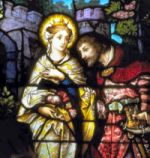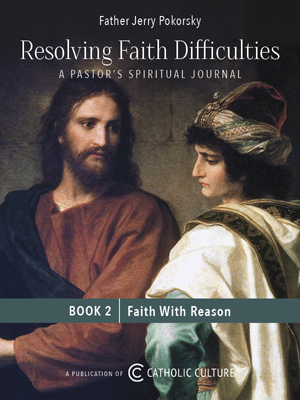Catholic Dictionary
Find accurate definitions of over 5,000 Catholic terms and phrases (including abbreviations). Based on Fr. John Hardon's Modern Catholic Dictionary, © Eternal Life. Used with permission.
Random Term from the Dictionary:
CALIFORNIA MISSIONS
The parish centers established among the American Indians by Catholic missionaries from Spain. Three sets of missions were founded, in sequence, by the Jesuits and Dominicans in Lower California (now Mexico), and by the Franciscans in Upper California (now the United States). The Jesuit missions and the years of their foundation, beginning from south to north, were: San José del Cabo (1730); Santiago de las Coras (1721); San Juan de Ligní (1705); Nuestra Señora de los Dolores del Sur (1721); Nuestra Señora del Pilar (1720); Santa Rosa or Todos Santos (1733); San Luis Gonzaga (1737); San Francisco Xavier (1699); Nuestra Señora de Loreto (1697); San José de Commundu (1708); Purísima Concepción de Cadegomó (1718); Santa Rosalía de Mulegé (1705); Nuestra Señora de Guadalupe (1720); San Ignacio (1728); Santa Gertrudis (1752); San Francisco de Borja (1759); and Santa María de Los Angeles (1766). These missions remained in the care of the Jesuits until the decree of expulsion of the members of the Society of Jesus in 1767.
Dominicans arrived in California in 1772. During their long stay, which lasted to about 1846, they established the following new missions between San Fernando de Velicatá and San Diego: Rosario (1774); Santo Domingo (1775); San Vicente Ferrer (1780); San Miguel (1787); Santo Tomás (1791); San Pedro Mártir (1794); and Santa Catarina Mártir (1797). The missions were eventually secularized by the Mexican Government in 1834.
Best known are the missions established by the Franciscans. They labored in California from 1769 to 1845. Their missions from south to north, with the dates of founding, were: San Diego (July 16, 1769); San Luis Rey (June 13, 1798); San Juan Capistrano (November 1, 1796); San Gabriel (September 8, 1771); San Fernando (September 8, 1797); San Buenaventura (March 31, 1782); Santa Barbara (December 4, 1786); Santa Inez (September 17, 1804); Purísima Concepción (December 8, 1787); San Luis Obispo (September 1, 1772); San Miguel (July 25, 1797); San Antonio de Pádua (July 14, 1771); Soledad (October 9, 1791); San Carlos or Carmelo (June 3, 1770); Santa Cruz (September 25, 1791); San Juan Bautista (June 24, 1797); Santa Clara (January 12, 1777); San José (June 11, 1797); San Francisco (October 9, 1776); San Rafael (December 14, 1817); and San Francisco Solano (July 4, 1823). Mexican independence of Spain put an end to the prosperity of the Franciscan missions and the peace of some thirty thousand neophytes. With the advent of the first governor under the Mexican flag began the secularization of these monuments of Christian zeal. By 1835 the Franciscans were deprived of control and the take-over by the government completed the ruin.
After Upper California was admitted to the United States in 1850, some of the Franciscan missions were gradually restored, and in recent years public interest has further advanced the restoration. They have become an important part of tourism in California.






